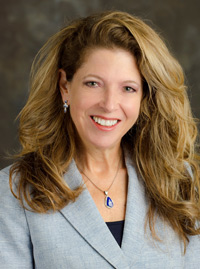Home Care Connect™ provides two-way communication and remote monitoring of home-based patients
 If the results of a 2016 pilot program are any indication, a home-care program using consumer electronics (e.g., tablets) with two-way video and remote monitoring should result in a more satisfied and better-informed patient, and reduced hospital readmissions and ER visits.
If the results of a 2016 pilot program are any indication, a home-care program using consumer electronics (e.g., tablets) with two-way video and remote monitoring should result in a more satisfied and better-informed patient, and reduced hospital readmissions and ER visits.
Home Care Connect™ is a program of Trinity Health At Home, the national home health care ministry of Trinity Health. It makes use of Plano, Texas-based Vivify Health’s continual care technologies to connect home-based individuals with Trinity Health At Home caregivers, who will remotely monitor their well-being.
Based in Livonia, Mich., Trinity Health serves communities in 22 states with 93 hospitals, as well as 120 continuing care programs, which include PACE (Program of All-Inclusive Care for the Elderly), senior living facilities, and home care and hospice services.
The initial “go live” for Home Care Connect was set for April in Trinity Health’s southeast Michigan communities. After that, the program will expand to Trinity Health At Home’s other agencies in seven states – Michigan, Indiana, Iowa, Illinois, California, Maryland and Ohio.
Virtual visits
“Trinity Health At Home’s Home Care Connect using Vivify Health technology enhances our care program by providing a two-way video communication component in addition to data collection,” explains Erin Denholm, president and CEO, Trinity Health At Home.
Participants will receive a kit that includes a 4G-enabled tablet configured with voice and text instructions. Directions walk users through steps for monitoring and reporting on their current wellness status, receiving immediate feedback, and taking part in virtual visits and patient education programs. Other wireless devices connected to the tablet, such as a scale, blood pressure monitor and pulse monitor, will automatically collect patient data regarding weight, blood pressure and other relevant measurements. Clinicians will review the data regularly, noting changes, and proactively intervening as needed.
“Patients may also spontaneously activate a virtual visit any number of times to assure care needs are being met,” says Denholm. “Sometimes, the patient may simply have questions and need reassurance from their care team about concerns.
“We are happy to communicate with our patients as they need us. In the rare circumstances in which patients may contact us in excess, we will take this as an indication that there is an unmet need. We will alert our social work teams to evaluate the patient’s needs, if needed.”
Instant connection
Home Care Connect may eventually serve up to 80 percent of Trinity Health At Home’s clients, including those with specialized care services, such as diabetes care, cardiac care, wound care, infusion therapy and joint rehabilitation, says Denholm. “The program will benefit most elderly populations at risk for chronic illnesses in the communities we serve. [It will] enable us to make in-the-moment interventions to meet patients’ urgent needs, thus preventing unnecessary ER visits and potential hospital readmissions.
“Home Care Connect, using Vivify Health’s communication features, will enable a patient and nurse to connect instantly,” she continues. “The care team can evaluate and make care decisions. This program makes the home care team even more valuable. Patients are happy to stay exactly where they want to be – home. Patients in our pilot Home Care Connect program reported a greater sense of satisfaction knowing that their care team has access to their vital information.
“The results of the pilot program are extremely encouraging,” says Denholm. “Zero patients were readmitted to the hospital 30 days after discharge. One hundred percent of patients found using remote monitoring technology helpful, and 100 percent of patients have a better understanding of their health condition after using the program’s technology. We look forward to an extremely positive impact on our patients in communities throughout the seven states we serve.”
People-centered care
Denholm believes that remote monitoring and virtual visits will enhance Trinity Health At Home’s commitment to people-centered home-based care.
“Virtual care and remote monitoring is an extraordinarily important component of our people-centered care. Home Care Connect enables truly individualized care and empowers patients to stay where they want to be. For some patients, this program’s connectivity with their care team may mean fewer in-person visits are necessary, as they may connect with their care team with two-way video or by phone. For some patients, this program’s connectivity may empower us to proactively intervene as necessary and prevent an ER visit by prompting an in-person home care visit by the care team.
“Trinity Health At Home has a new vision and strategy of getting better and getting different – required to continue our mission of providing the best care to all those who need it in the communities we serve,” she continues. “Due to anticipated changes in the care model, we do believe the clinical team will carry a higher caseload while making fewer in-person visits with remote care, [but] coupled with home visits, [Home Care Connect] actually provides a sense of more care to patients.
“Home-based services with integrated virtual care are really no longer defined by an acute care stay,” says Denholm. “The healthcare world – and how health systems and physicians get paid for care – has changed significantly over the last several years. Identifying high-risk and rising-risk patients with high predictability for unplanned ER visits can trigger the use of remote monitoring without an admission to home care. The impact on total cost of care and savings is changing practice patterns.
“Healthcare providers are now recognizing the extraordinarily important role home-based services can provide. With the ability to proactively monitor home care patients and provide in-the-moment interventions, Home Care Connect makes it possible for someone to stay where they are most comfortable – the sacred place they call home.”
